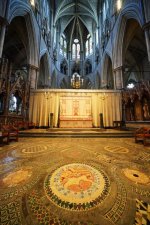Visitors can walk on rare coronation floor in socks
By Sean Coughlan, Royal Correspondent
24 March 2023
BBC News
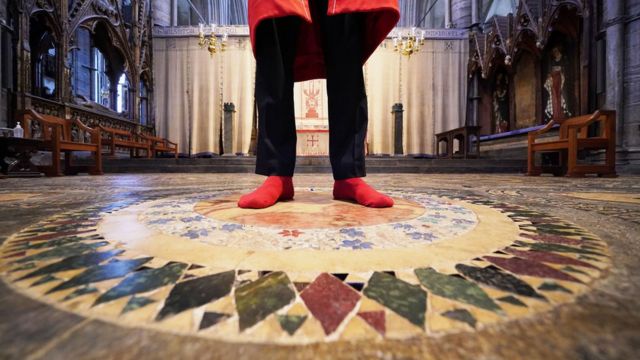
The coronation will take place on this 750-year-old decorated floor
Historic medieval flooring, at the exact spot where King Charles III will be crowned inside Westminster Abbey, is going to be opened to visitors - as long as they take off their shoes.
Abbey authorities say this will be the first time in living memory that the public will have been able to walk across the "Cosmati pavement".
The mosaic is claimed as one of Britain's greatest medieval treasures.
But visitors will have to wear socks to protect the 13th Century surface.
At the centre of the medieval mosaic is a polished stone circle with a swirling pattern, surrounded by rings of designs in glass, marble and coloured stone, and this is where the coronation chair will be placed when King Charles III is crowned on 6 May.
Since the 19th Century, the richly-decorated but rather battered floor had been covered up with carpets - including for Queen Elizabeth II's coronation in 1953 - or roped off from public access.
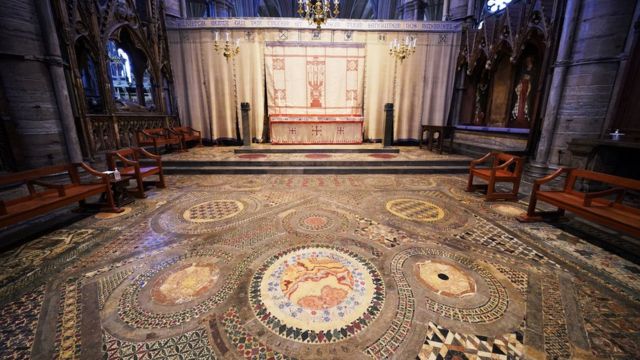
The medieval floor had been covered by carpets at the previous coronation in 1953
But the intricate mosaic, claimed as the most important example of this style outside Italy, will be revealed for the coronation of King Charles III, with the 700-year-old coronation chair being placed in the centre of the floor.
For 10 weeks after the coronation, from 15 May to 29 July, visitors will be able to walk across the Cosmati pavement and stand on the spot where centuries of royal coronations have taken place.
Standing in their socks - bare feet will not be allowed to avoid the floor getting "sticky" - visitors would be able to get the view that King Charles III had, looking towards the high altar with the congregation and choir behind him.
The Abbey, expecting a high demand for this one-off experience, said the visits must be pre-booked, with people allowed on to the flooring in small groups, as part of a £15 guided tour.
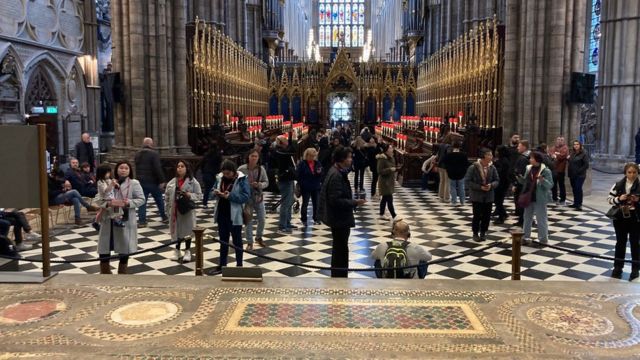
Visitors to the Abbey can see the flooring designed by medieval Italian craftsmen
But this week the site was also briefly occupied by anti-monarchy protesters, who walked on to the Cosmati pavement, wearing shoes, and held up a banner.
A spokesman for campaign group Republic, which has called for the abolition of the monarchy, criticised the coronation as a "pointless parade" that would shore up an "unelected head of state".
The medieval floor has had painstaking restoration work, taking off centuries of grime, but the Abbey's head conservator Vanessa Simeoni says much of the stone is original.
She said that working on the historic floor gives her a real sense of continuity with the original craft workers who laid the mosaic 750 years ago.

Vanessa Simeoni, head conservator, says she feels a connection with the original makers of the flooring
"It's absolutely amazing. I always feel a connection with the people who made these objects. They knew their materials, they knew their designs," says the conservator.
Working on the stones she says the conservators can see different techniques that were being tried by their medieval forebears, such as a way of waterproofing and keeping out the damp that the Italians working in London had developed.
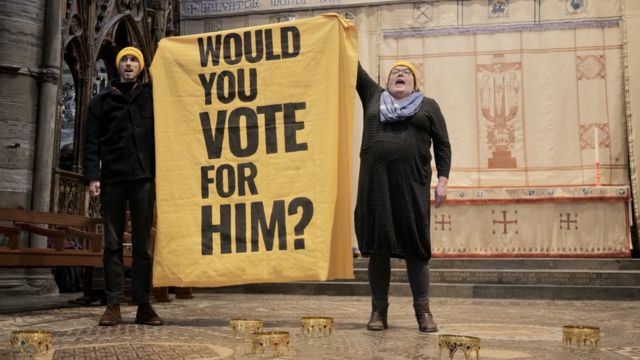
Anti-monarchy protesters walked on to the Cosmati pavement and held up a banner
The floor, named after the Italian craftsmen who created it, was commissioned by Henry III and completed in 1268. It's a square of about 7.5 metres, with a design of interlocking patterns, using inlaid stones, such as purple-coloured porphyry and yellow limestone.
When it was first laid, the marble, glass and coloured stones would have been highly polished, so that the floor would have shimmered in the candlelight.
Ms Simeoni said that as well as Italian and local English materials, the floor includes stones from Egypt, Greece and Turkey.
Many of the pieces of stone and marble used in the floor were taken from Roman ruins and recycled by Italian craftsmen who brought them to Britain, she added.
It means that the coronations of monarchs in Westminster Abbey have taken place for centuries on a surface built from the fragments of an even older Roman Empire.
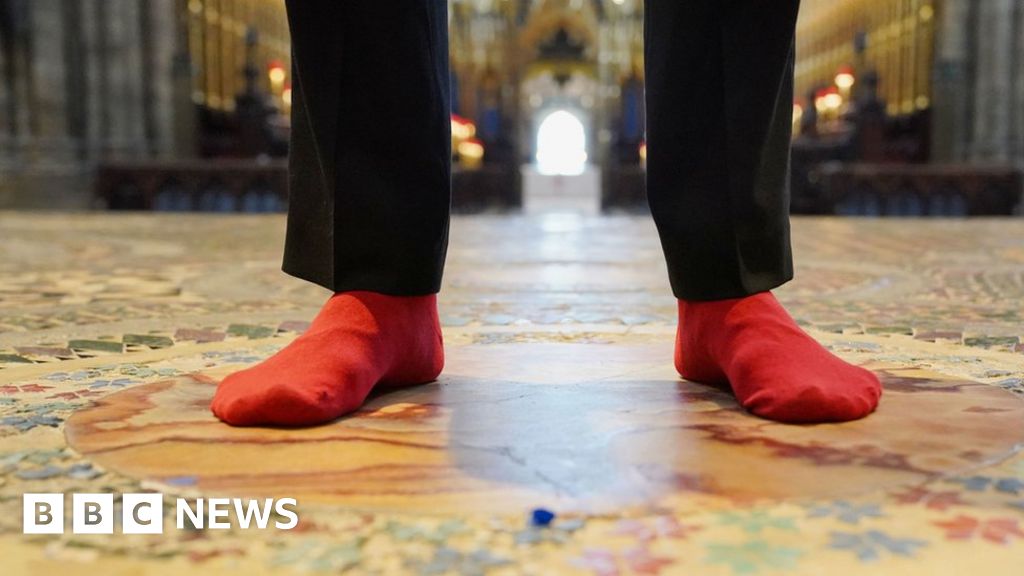
Visitors can walk on rare coronation floor in socks - BBC News
Westminster Abbey will allow access to the spot on a 750-year-old floor where the King will be crowned.
Last edited:
